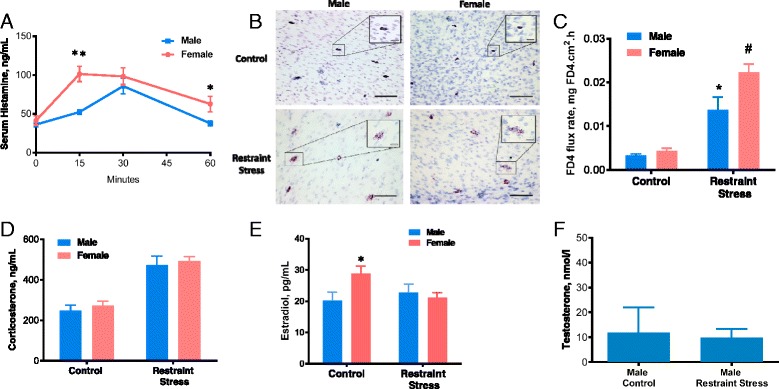Fig. 2.

Psychological RS-induced intestinal permeability and serum histamine levels in female and male C57BL/6 mice. a After experiencing 15 min (n = 6/sex), 30 min (n = 6/male, n = 12/female), and 1 h (n = 5/sex) of restraint stress (RS), females exhibited a statistically significant increase in serum histamine (t-test; p<0.05), as measured by ELISA, compared to males. b Representative photomicrographs of intestinal mesentery from male and female mice stained with toluidine blue showing increased degranulation in RS animals; original magnification, ×20, bar = 100 μM, inset; ×100, bar = 20 μM. c Distal ileum harvested after RS demonstrated increased permeability for both females and males, compared to baseline (n = 3–4/sex). After RS, female intestinal permeability was 0.0223 ng cm2/h and male intestinal permeability was 0.0137 ng cm2/h. d Serum corticosterone increased similarly in male and female mice after 30 min RS (n = 6/male, n = 12/female). e Serum estradiol decreased in female mice after 30 min of RS (n = 6/male, n = 12/female). f Serum testosterone levels were similar in males before and after RS (n = 6). Values represent mean ± SE, *P < 0.05, **P<0.01 vs. other treatments
